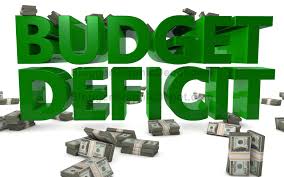The budget deficit in first nine months of the current FY has widened to Rs1.238t, which is nearly equivalent to a full-year target. Inflated revenue and suppressed expenditure projections are presenting a challenging situation for policy makers.
Owing to a larger than the targeted budget deficit, the government resorted to heavy borrowing in the period from July to March, exceeding the annual domestic borrowing limit. The July-March borrowing accounted for 94pc of the annual external borrowing limit.
As per the official documents released by Ministry of Finance, the budget deficit clocked in at Rs1.238t – 3.7pc of gross domestic product (GDP) for July-March period.
Details of revenues and expenditures of the federal and four provincial governments necessitate the release of a substantial supplementary budget this year, although the Supreme Court has disallowed the ministry from doing that without seeking prior permission of the federal cabinet.
Provinces in comparison to the federal government seemed to stay on track except for Khyber-Pakhtunkhwa that recorded a deficit instead of declaring a budget surplus. The rest of the three provinces cumulatively recorded a cash surplus of Rs137b for the federal government, which helped contain the overall deficit to 3.7pc of GDP.
The International Monetary Fund (IMF) has already been informed that the overall budget deficit is likely to touch Rs1.373t or 4.1pc of GDP by the end of current FY.
On the contrary, the nine-month data points that the revised budget deficit target of 4.1pc is likely to be missed by a wide margin holding IMF’s projections of 4.5pc or Rs1.5 trillion to be true.
Moreover, the finance ministry has constrained to disburse funds to the power sector since the allocation of Rs118 billion as power subsidies is insufficient.
This current FY’s higher than targeted deficit will be a definite impact on the next year’s fiscal deficit target and the government will have to resort to setting new target of around 4pc of GDP.
According to official documents, collection during the first nine months was Rs2.5 trillion or 62pc against annual targets of Rs3.956 trillion.The shortfall was recorded on both tax and non-tax revenue sides.
Total expenditure stood at Rs2.8 trillion or 63pc of the annual target. However, the major slip was on account of current expenditures that increased to Rs2.5t or 72pc of the annual target.
The federal government booked Rs1.4t as the budget deficit and in order to finance the gap, it borrowed Rs1.245t from the domestic sources which accounted for 119pc of the annual target. On the same lines, the government borrowed a net Rs220b in foreign loans for budget financing, which was recorded as 94pc of the annual target.




